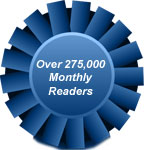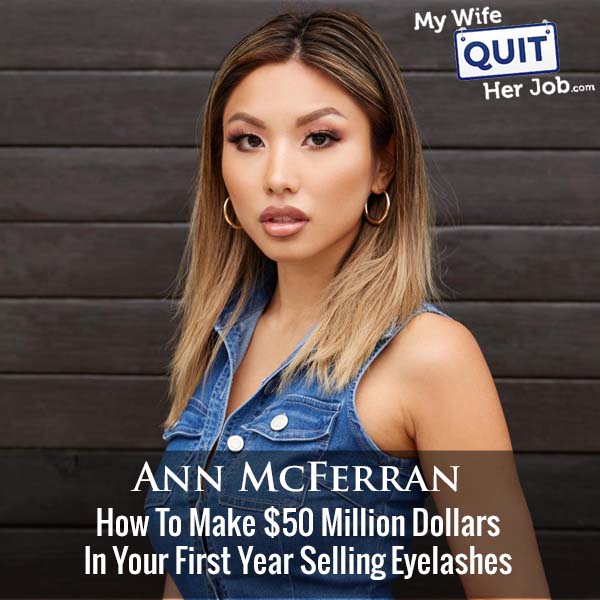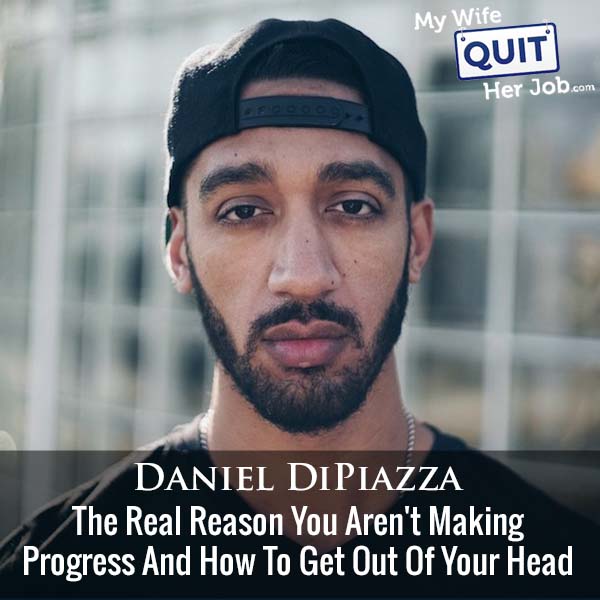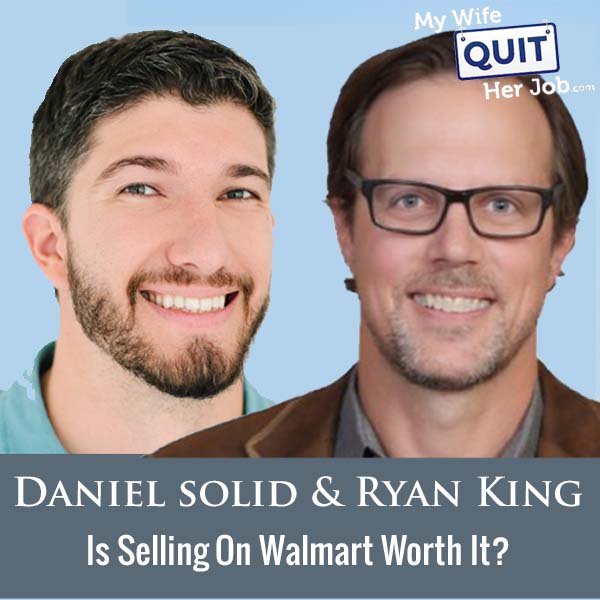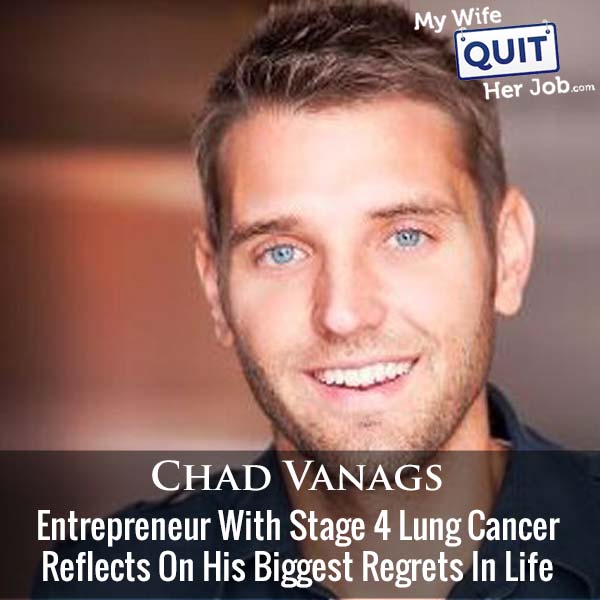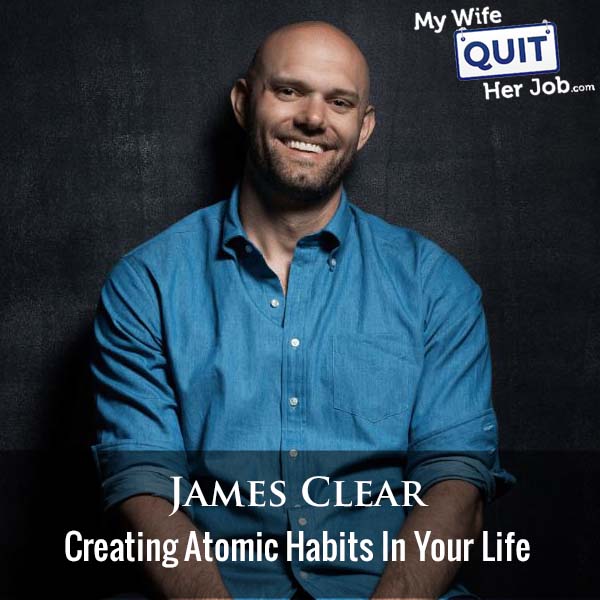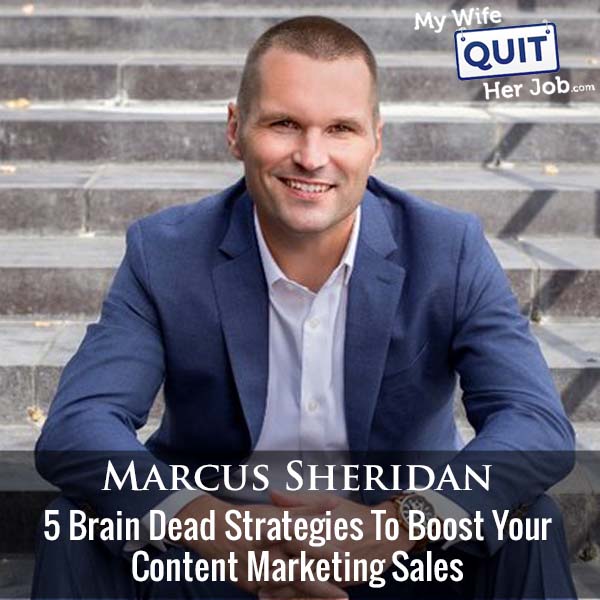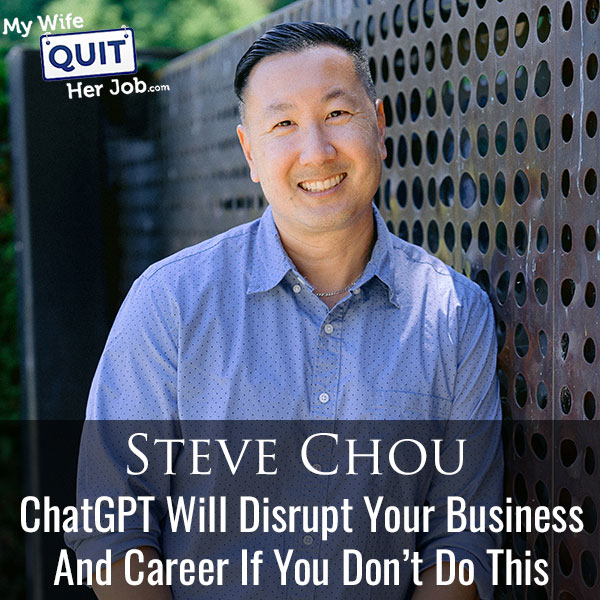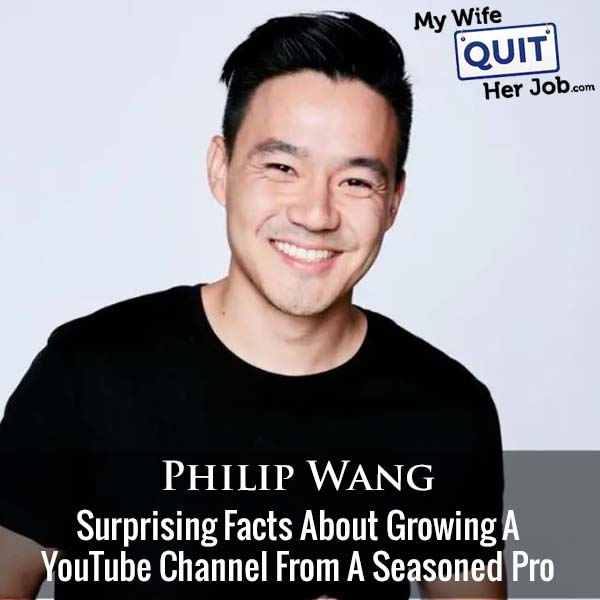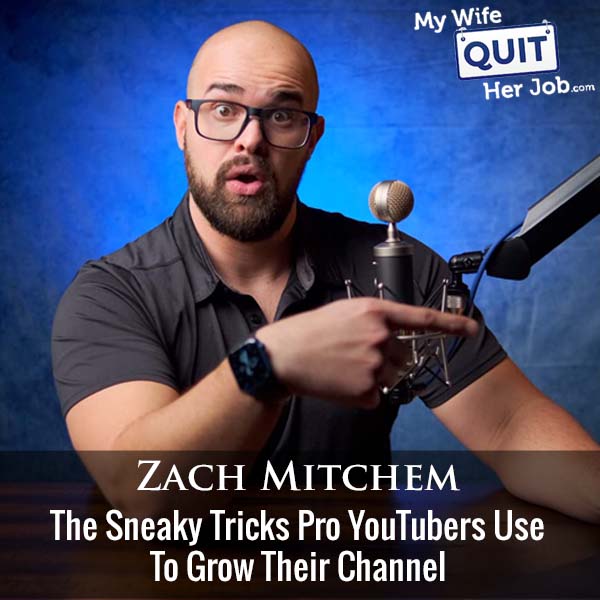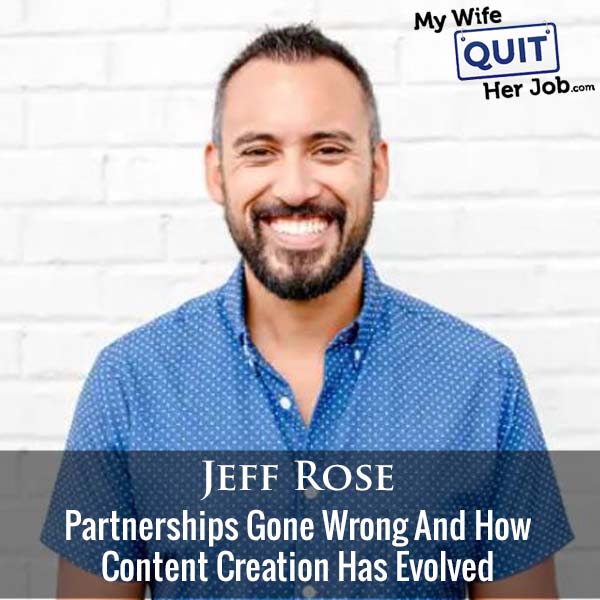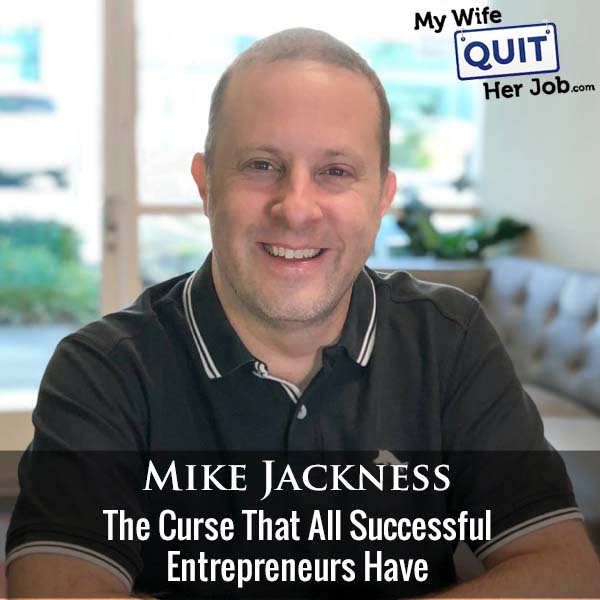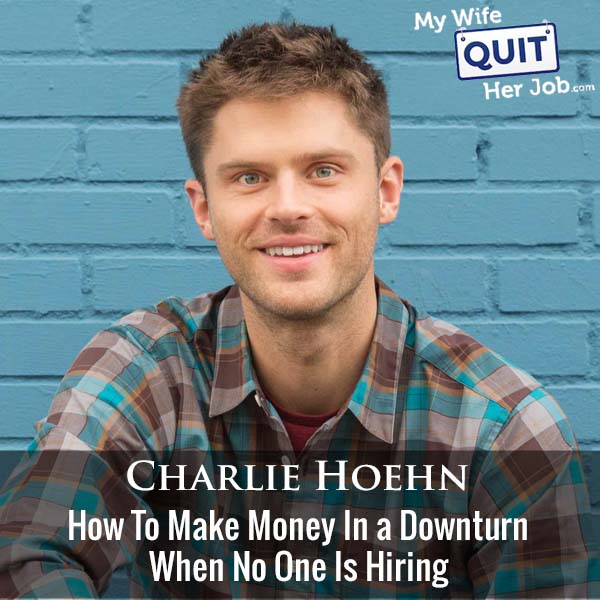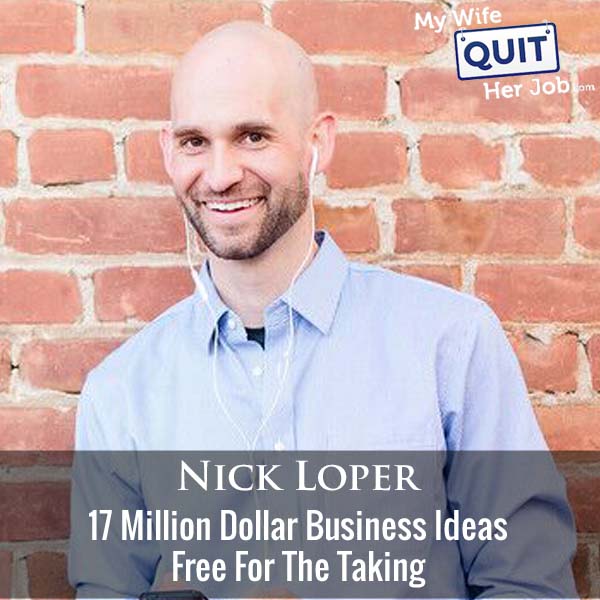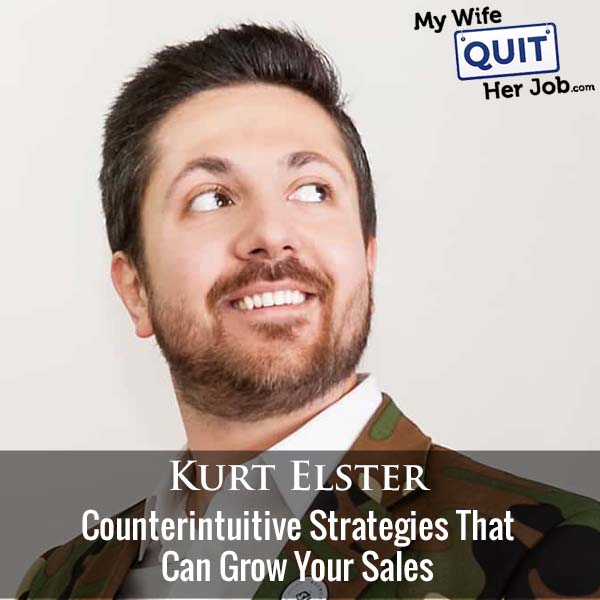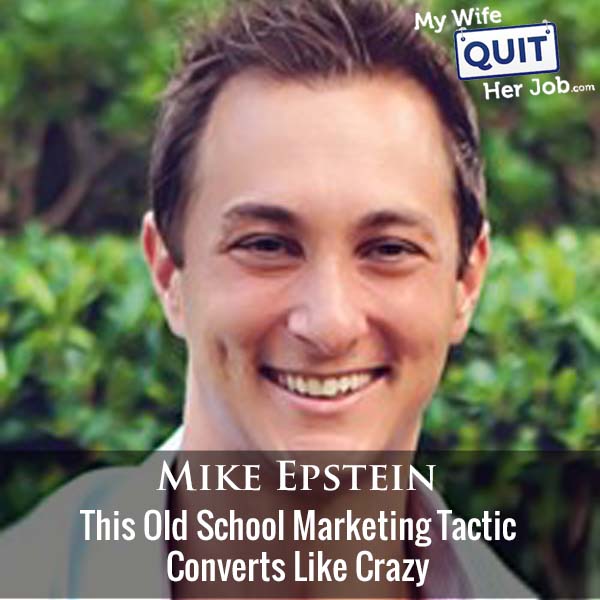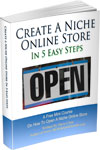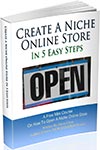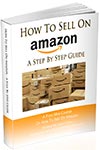Podcast: Download (Duration: 58:02 — 66.7MB)
Today I am thrilled to have Ann McFerran on the show. Ann is the founder of Glamnetic, a company that makes magnetic eyelashes.
But this is no ordinary eyelash company. Ann grew her brand to over 50 million dollars in revenue in one year and she started this in her bedroom. In this episode, she reveals how she did it.
What You’ll Learn
- How Ann came up with the idea for magnetic eyelashes
- How Ann made 50 million dollars in her first year
- How Ann advertised her brand and built a following
- How to find suppliers to manufacture your product
Other Resources And Books
Sponsors
Postscript.io – Postscript.io is the SMS marketing platform that I personally use for my ecommerce store. Postscript specializes in ecommerce and is by far the simplest and easiest text message marketing platform that I’ve used and it’s reasonably priced. Click here and try Postscript for FREE.
SellersSummit.com – Sellers Summit is the conference I run every year that caters to ecommerce sellers all over the world. Click here and grab your ticket.
BigCommerce.com – If you are interested in starting your own online store, then I highly recommend BigCommerce. Out of the box, it already comes with full functionality and you do not need to install additional plugins. Click here to get 1 month free
Transcript
You’re listening to the My Wife Could Her Job podcast, the place where I bring on successful bootstrap business owners and delve deeply into the strategies they use to grow their businesses. Today, I have my friend Anne McFerrin on the show and Anne is the founder of Glamnetic, which is a company that sells magnetic eyelashes. And she grew this company to over $50 million in just a couple of years. She’s funny, totally down to earth. And you’ll learn exactly how she did it. But before we begin, I want to let you know that tickets for the 2023 Seller Summit are now on sale over at sellersummit.com. It is the conference that I hold every year.
00:29
that specifically targets e-commerce entrepreneurs selling physical products online. And you all probably know me well enough now to know that my event has zero fluff. Every speaker I invite is deep in the trenches of their e-commerce business and not high-level guys who are overseeing their companies at 50,000 feet. Every year, we cut off ticket sales at around 200 people and everyone eats together and everyone parties together every night. I personally love smaller events and tickets always sell out far in advance. Now, if you’re an e-commerce entrepreneur making over 250K or $1 million per year,
00:59
We also offer a special mastermind experience where we break up into small groups, lock ourselves in a room, and help each other with our businesses. The Seller Summit is going to be held in Fort Lauderdale, Florida from May 23rd May 25th. To get your ticket, go to SellersSummit.com. That’s S-E-L-L-E-R-S-S-U-M-M-I-T.com. I also want to thank Postscript for sponsoring this episode. Postscript is my SMS or text messaging provider that I use for e-commerce, and it’s crushing it for me. I never thought that people would want marketing text messages, but it works.
01:28
In fact, my tiny SMS list is performing on par with my email list, which is easily 10x bigger. Anyway, Postscript specializes in text message marketing for e-commerce, and you can segment your audience just like email. It’s an inexpensive solution, converts like crazy, and you can try it for free over at postscript.io slash Steve. That’s P-O-S-T-S-U-I-P-T dot I-O slash Steve. And then finally, I wanted to mention my other podcast that I released with my partner Tony. And unlike this one, where I interview successful entrepreneurs in e-commerce,
01:57
The Profitable Audience Podcast covers all things related to content creation and building an audience. No topics off the table and we tell it like how it is in a raw and entertaining way. So be sure to check out the Profitable Audience Podcast on your favorite podcast app. Now onto the show.
02:18
Welcome to the My Wife, Quit Her Job podcast. Today I’m thrilled to have Anne McFerrin on the show. Anne is the founder of Glamnetic, a company that makes magnetic eyelashes. Now, as a dude, I’m not really into eyelashes, but, I actually had never heard of Glamnetic before I talked to my wife. And when I told my wife that Anne was coming on, she literally flipped out. Now, I hope that my wife doesn’t get mad at me, but we’ve actually spent a lot of money on eyelashes over the years.
02:45
including getting these crazy extensions where they literally glue individual hairs to every single lash. And then if my wife were ever to cry or take a shower, her eyes would like sting like crazy. And she’s tried red light therapy, we’ve purchased countless extensions, and magnetic eyelashes apparently are the solution to all problems. Anne grew her magnetic eyelash brand to over $50 million in revenue and yes,
03:11
She started this in her bedroom in just a year and was doing seven figures per month. And today we’re gonna learn exactly how she did it. So welcome to the show, How are you doing? Hi, thanks for having me, Steve. Yeah, so all those stories are true. My wife spends a lot of money on eyelashes. It’s pretty ridiculous. Yeah, I would say eyelashes are one of the most expensive, I mean, they’re the most desirable thing, but also one of the most expensive parts of like the entire face, just because it…
03:40
It’s very tedious to do. know, typically people go in for lash extensions, like you said, with a lash check and they spend like hundreds of dollars and they have to like literally lay there for an hour and a half. It’s really not pleasant. And then your lashes and your natural lashes end up falling off with it. So we really tried to figure out a solution and strip lashes are the other thing that you can do, but it’s like glue is really, really difficult to work with. So that’s why I was like there, there’s like gap here in the market for.
04:08
easy to apply strip lashes, but that are not necessarily glued on. So it’s funny is like with with my eye, my wife, like, after a while, they start falling out, right? And all of sudden, they’re like patchy, there’s like this huge gap. And she’s got to like do a comb over. Yeah. Anyway, I am thank you for putting on your eyelashes. Your eyes look beautiful today. And what’s funny, I was actually going to pick up some glam netics to surprise you with them. But my wife thought that was a little creepy. So I didn’t do it. Anyway.
04:37
How did you come up with the idea? Was it out of your own personal need or did you find like a gap in the market? Yeah, it was a combination of both. So I’ve been wearing lashes my entire life, like basically since I was 17, like 16. And because I was the only Asian person in school, so everyone’s eyes was like super big. And I was like, want my eyes to look like that. And really like the only beauty products that would do that was lashes.
05:07
but they were really difficult to apply was the problem. But I learned, or I taught myself how to do it. And then literally every single day, like I, well, you will not see me without lashes on. It was kind of an insecurity of mine to like just not have lashes on. And then basically fast forwarding, you know, I’m, I have a lot of friends who are interested in wearing lashes and I always have to like help them apply theirs because they wouldn’t know like for an event, for anything. And I was like, this is really problematic. Why do people not understand how to do this?
05:37
Around the same time, there’s this like wave of awareness around magnetic lashes. So the type that would, but they were the original like first prototype, which was the type that sandwiched your lashes in between two layers of magnets. So it was like the top layer had like three magnets and the bottom layer had three magnets, like maybe three magnets max, like not more than that, maybe like two. And I bought them and tried them and they just, I literally could not get them on for the life of me. And I was like, there’s no way this is.
06:05
But I really liked the idea of magnetic instead of glue. I was like, okay, we’re going somewhere away from glue at least. This is the only invention that I see away from glue. I was like, how do we make this better? And so I started, I guess something clicked in my head where I was like, what if I take glam magnetic, like glam lashes and make them magnetic? So turn them into glam magnetic lashes. That’s actually where the name.
06:34
Glamnetic came from. And I just took basically a full strip of lashes that were like super full and fluffy. And then I told, I just started contacting factories and I was like, you guys need to glue like five magnets on it. You would not see magnetic lashes out there with more than three magnets at the time. So five was like a lot, right? people were like, the factories I asked, they were like, really five? Like that’s a lot.
07:01
And I would get all these samples back that looked so wonky, the glue’s not even dry, like falling off. And I got basically hundreds of samples from different factories and maybe two, you know, at the end of that, when that took like a lot of months, two came back and they were actually like high quality. So I started moving forward with that. And I was like, instead of having a layer sandwiching effect, I need to figure out something else. And I had seen a couple of brands do
07:30
Magnetic liner, but they were not done. Well, like it was in a pot form It was in like this sort of pot form and you have to dip a brush and then like try to apply it and then it would be like a really sad but I Understand exactly what you’re talking about It was a really weak hold so I was like this is not working so then I just sort of went back to the drawing table and I was like ideally as a consumer I would love to have a liquid a liquid version of that and so then I just again started
07:58
figuring out like, I mean, I taught myself sourcing, product sourcing, and then I just asked a bunch of factories to try to make this. And that’s sort of how we came upon the final prototype. And it just took a year, took over a year. I was doing it part time while I was also painting, like at night I was communicating overseas. So I was just staying up late, super late at night, like communicating on WhatsApp and you know.
08:27
I have to ask this though. You’re Asian and how did you not end up as like a scientist, an engineer, a lawyer or a doctor? I’m an engineer. I had to give up that part of my career like five years ago, but it was tough. know, funny part was I actually almost became a doctor. I went to UCLA for Psychobiology, which is like a pre-med degree that would like, you know, then you take the MCAT and then you go into. Okay, yep.
08:56
Oh, it was a, yeah, it was basically pre-med. So I graduated and I was like, ah, this is not for me. I’m much more of a creative, you know, I was like left-handed. My mom was sort of like an artist and I love painting. So I thought my calling was being an artist. I took like a couple art classes at UCLA and the classes at UCLA are insane because the professors there, you know, had shown up like the Hammer Museum and all this stuff. And so I was thinking, oh my God, like,
09:25
this is my calling because I just had so much fun in the classes and also really excelled there. And I just had a really natural gift towards visual arts. And then I sold one of my first commissions before I even graduated for $5,000. And I thought, this is it. LA is it for art. And I’m in the right place. And why not try? And so I gave it a good try for four to five years.
09:53
And your parents were cool with that? They were supportive. They were just saying, you know, as long as you can pay the bills and you can pay off your student loans and all this stuff, because I paid college 100%, which I did. I got a part-time job at a laser removal clinic while I also doing that. So I was doing a bunch of stuff. And then, you know, it kind of took off when I realized like
10:20
a format that like people loved. And so I started doing paint like pet commissions, because everyone like wants their dog painted. So I just had like a bunch of them lined up. But then I was like, literally at home all day paintings, and my back started to hurt. And I was like, I’m slaving away, you know, and, then how did you become an artist to a business person, though? It doesn’t like what is the path there? Yeah, so I kind of started with me just realizing that this is kind of a really lonely venture, like, I didn’t really talk to anybody all day, unless I had somebody at
10:50
over at the studio, my studio, aka my bedroom. So I was like, I’m just like literally sitting at home all day. That’s the only way I can be productive was like being in front of a painting or a canvas. And I was like, this is really lonely. And I don’t see myself doing this for like another 40 years. And if I don’t see like a long-term path and also a way that I can accumulate like money at a faster rate, this is not sustainable.
11:18
And then I started meeting a lot of people that were doing e-commerce because they my clients buying my paintings. So I was like, and I started talking to them and I was like, the lifestyle that they had was amazing. They like, you know, can take meetings from home sometimes. Like everything’s kind of virtual and you see like consistent revenue coming in on a daily basis. And I thought about it too, because one of the things I loved about being an artist was being able to
11:45
create something and then making people emotional and affecting their lives in a way. And I wanted to figure out how I can do that on a mass scale. can’t do it just literally like eight hours per painting, one by one. can affect thousands of people if I’m creating a product, putting my creativity into it and then mass producing it infinitely. So to me, it just seemed a no brainer that that was the business that I needed to put my effort, because I could put my effort and time into anything.
12:14
potentially do well. why not do it do it to something that had better ROI and long term scalability and like long term lasting effects affecting more people. was like, just was no. Then I came up with that idea. And I was like, I could not sleep. I like had to do it. Well, let’s talk about the early years. So you mentioned it took you a year to get manufactured. Where did you find your suppliers? Did you like look on Alibaba? Or did you fly to China? How did you do it?
12:41
Yeah, I mean, went, I just Googled honestly, like suppliers for lashes, magnetic lashes in particular. And yeah, Alibaba popped up and I looked on there and I was like, well, there’s like so many suppliers on here. And every one of them did not have what I wanted. So the only way that I could do it was I needed to find a supplier that can do magnetic and also do like strip, like glam lashes. And so I would
13:11
find those suppliers and figure out I’ll be like, okay, you guys mix this method with this method. Because they were you designer, or do you just kind of verbally tell them like, this is what I’m trying to do? Can you guys make a prototype? Yeah, I would draw I would provide them with a drawing. Because I was artists too. So it’s like, I would just draw it. Oh, yeah, that’s right. Yeah, yeah, that helps. Yeah, exactly. But it wasn’t too hard to I mean, it’s just like, literally take the lash, put the put the magnet on it and just make sure and then like it needed to have a magnet, like case that had
13:41
So designing the case was also important. so, yeah, when we came out with it, it just blew people away, I think, because it just wasn’t on the market. What was preventing the existing magnetic lash makers from just putting more magnets on? Or is there a lot more to it? They just didn’t think about it. Okay. They just didn’t. I don’t know why. was thinking that. was like, this is so obvious to me. to them, obvious, I mean, it wasn’t because they’re not selling it.
14:11
I really come from the perspective as a consumer, as a lifelong consumer and an expert in my own right of lashes. then also like being younger, I think. I think a lot of these founders were a little older. And so I was like understanding trends, I think a lot better. And I’m in LA, so it’s just like you kind of understand that a lot more. And then all my friends are using it. So I got a lot of different feedback from them. That was really helpful.
14:40
Presumably you didn’t have much money when you first started this. So what was like your first order? Like what was the minimum order quantity? Yeah, it was like 100 lashes. Oh, that’s it. Okay. Yeah, it was like a very small amount per and we did like five we did five styles. So okay. And yeah, they all started with the letter L. But they were bigger. So I was I was
15:03
I was sort of going towards what I liked, which was more glam full lashes. And then later on, I did realize that people prefer natural. So then I started launching more natural stuff. yeah, initially, I went out the gate with medium to long lash styles. But because the technology, the application methodology was so innovative, I think that’s why it sold out. then, once that sold out was when I re-
15:33
we bought like a bigger order, you know? Yeah, of course. Yeah. Do remember how much you spent like per unit on like that first order? Yeah, it was like around $3, $3, $4. $3 per. Okay, so really small. You didn’t need a lot of money at all. Yeah, the last one, then you have to buy the liner separately. So was like, yeah, but it was it just took some time to scale, you know, and you mean like, you, I wanted to go in because we it’s like fully self funded. So like, I didn’t raise any money.
16:03
wanted to go in just being sure that we were gonna sell. I didn’t wanna be stuck with a lot of inventory, put a lot of money out the door. So trying to really do it slow and steady. was like, there’s no rush. My goal initially was like, I’d be happy with $10,000 a month in revenue. That was literally my- That’s how we always start, right? We were happy with 5,000 a month in the beginning also. was was like 10,000 a month in revenue, I’d be happy. Yeah, that was my starting point. So we surpassed out the first month and I was like, whoa.
16:30
Yeah, what’s nice about your lashes, they don’t take up much space. I can’t even imagine ordering a container of lashes, right? You’re probably ordering in these small packages that were just air shipped to you, right? Yeah. And then we used a 3PL, third party fulfillment center, and then they basically stored it and then they shipped it out for me. And it was so funny because I had so very little units, because they’re used to dealing with bigger fish, you know? Yeah.
16:56
Yeah, of course. And I’m over here like, you guys lost two of my lashes. And I was like, I was like calling that girl every day. Like the and she was like so annoyed with me probably because I was like calling because I saw like five missing from the the warehouse. And I was like, where did the five go? Where did you guys take it? Like, you guys steal it? I was. Steal your lashes. Yeah, it was.
17:24
you know, when you only have 100 per lash, was like, you gotta, it’s valuable. Yeah, now it’s like, can’t even, I don’t think we can even keep track of how many we’ve. Yeah. Okay, so walk me through the progression. So you order your first 105 styles, and then those sell out real quick. And then your second order, did you order like significantly more? Yeah, like 500. 500? Yeah. So it really was a gradual progression. of sales was a little faster than I thought. So then it was like, we could stock up a little more.
17:54
And then, and immediately use a 3PL or did you first fulfill out of your own bedroom? I never fulfilled out of my bedroom. just didn’t want to deal with the hassle of packing packages. was like, I need to focus on scaling this marketing this digitally, which I recommend to all founders is just start with a 3PL off the bat because they actually save money because you they have a better shipping rate than if you were to like ship yourself. So it’s like, what’s the point?
18:24
You know? How did you find your first three-pill? Like today there’s a diamond dozen, and it’s pretty hard. They all look the same, Yeah. Well, so basically I took a business partner on, basically, so Kevin Gold. After the first month of sales, I had met him and he was like, oh, I wanna help you with like, you know, all of the backend stuff, infrastructure. And I was like, okay, cool. Like I can basically focus on marketing, creative product, like all this stuff I wanna do.
18:53
And then he had a 3PL he was already working with and the other brand that he owns. he was just like, okay, let’s just use them because we already like using them and they’re good. So we ended up going with Shipmunk. Okay, oh, Shipmunk. Okay, so it’s like a mainstream one. Yeah, I’ve heard of Shipmunk. So in terms of what’s nice about your stuff is it’s so light. Like the 3PL really makes sense for you. Would you have done anything different if your items were larger?
19:22
Um, I still would use a 3p. You still would use a 3p. Yeah, because I mean, you don’t want to even if they’re like if they’re heavier, it’s actually worse. Doesn’t he? You like kind of carry all that over to? Oh, yeah. That’s true. That’s true. Well, how did you decide on your margins? So you were getting these you said for like five bucks. What were they selling for when you first launched? Oh, I mean, 30, $30. I think that’s typical for lashes. Yeah, it’s typical for lashes like
19:51
And we had to pay more because of the magnetic component. They were all good hand sure. They’re all handmade and hand glued. So it’s like they’re more like premium lashes. And so yeah, just hand gluing everything. It just takes so much time. And then like, they’re going in there and hand making it’s not machine made, like, sort of drugstore brand ones. Did you have in mind like, certain margins that you were only willing to sell them at?
20:19
Not necessarily. I think we just went in. I wanted to see what comps were in the marketplace at the time that was like the comps. I didn’t want to go like there were comps that were way more expensive than what we were selling out. Like we were trying to go towards like sort of a lower end, but everyone was going like crazy. Big just because it was such a new product. But also it is a high quality lash. And so and then with factoring in marketing, you have to spend so much on marketing. You have to like
20:47
make sure that you do figure out how to get obviously the highest margin possible, but also be competitive. That’s a really tough thing to crack. When you’re starting a new product, like, what do I charge for this? What moves for you? We actually started off at a higher price and then lowered it a little bit. Interesting. How did you guys do quality control? Yeah. Because they were…
21:16
very minimal orders, would just have it shipped to my place, I would check them, each of the boxes. But then once it started getting to thousands of units, it was a lot harder. It was spot checking. We were like, okay, we’ll check whatever. So you just put them on? I could see these old Chinese ladies putting them on. Yeah, I would tell the factory to send me basically a bunch of… Yeah, I would tell them to just send us…
21:46
their QA videos and so they send me like hundreds of videos of just like them testing out different lashes, making sure the magnets are not falling off and all these things. That was a bigger problem in the beginning. Now it’s pretty streamed. Now it’s probably smooth. that does it overseas right before it even leaves the port. My first book, The Family First Entrepreneur is now available for pre-order at your favorite online retailer. Now this is a book about entrepreneurship.
22:15
but not the kind that they tell you about in business school or that you often hear about online. Now, if you can relate to my wife and I story, you probably don’t see to become world famous or ridiculously rich. Now you might not say no to these things, but we probably have similar priorities. You want a good life and the freedom to enjoy it. But here’s the problem with 99 % of the business and entrepreneurship advice out there. They all preach that you need to work 80 hours a week and hustle your butt off just to get ahead. And in fact, a popular saying is that entrepreneurs are willing to work 80 hours a week
22:43
to avoid working 40 hours a week for someone else. While I’m calling BS on this, if you follow this advice, then you’ll end up sacrificing your time and your freedom for the promise of riches, work yourself to the bone and lose what precious time you had to spend with your loved ones. Now on this podcast, which I’ve run since 2014, I’ve interviewed over 450 successful entrepreneurs who are absolutely killing it with their multi-million dollar businesses. But what you don’t hear about publicly is that they don’t see their family much or that they’re totally burned out or stressed out.
23:13
you don’t hear about the huge sacrifices that they had to make in order to get there. So in this book, I’ll share with you an alternative to the hustle culture nonsense we so often hear about in relation to achieving financial success. You can in fact achieve financial success without being a stranger to your kids. You can make good money and have the freedom to enjoy it. And you don’t have to work 80 hours a week and be a slave to your business just to make it all work. So if you’re tired of hearing from a bunch of single men or women or 20 something kids who drive fancy cars,
23:41
and brag about how hard they work or how much they make, I will give you a different perspective from a father who makes both business and family work. So join me in my book launch and get access to a bunch of freebies. Go to mywifequitterjob.com slash book and I’ll send you bonuses, invitations to book parties that I’ll be throwing all over the country and special offers. That’s mywifequitterjob.com slash book. Now back to the show.
24:07
Yeah, same here. We have someone actually inspect every single piece. It’s actually pretty reasonable. Yeah. Before they’re even shipped. Do you have multiple factories or are you still using the original ones that you started with? No, no. Yeah. Now we have completely shifted. We’re like way more advanced with like the factories that we’re working with. There’s a got bigger criteria like for quality. And then we have somebody go and inspect the factory before we even work with them. They do a full audit report. It’s like and then we have
24:37
Yeah, six different factories we’re talking to in case like one of them doesn’t come through for something we have. You know, we have it somewhere else. And yeah, and then we have the QA company that gets a whole thing. It’s a whole it’s become a whole massive. Yeah. Do you ever have to go over there or no? I could never because it was COVID like they were shut down. That’s right. It’s still shut down. It’s crazy. It’s been it is actually. Yeah, I wanted to go check out the factories, but we actually
25:05
We just hired somebody to go over there who could actually go into the country. So we hired and then we would have her call from the factory and we’d meet the owner and stuff like that. Okay. All right. Let’s talk about the interesting stuff. How did you generate sales? Like your first sales, how did you generate those? Yeah, it was very like guerrilla marketing initially. We were literally, I mean, it was just me on the team when I say we, but initially I just DM’d like every customer that was following us on Instagram.
25:35
And I just, I would be like, Hey, how are you? Thanks for following us. You know, and then I would ask them if they’ve ever heard of magnetic lashes, if they’ve ever tried magnetic lashes, a lot of them that would be like, yes, I’ve heard of it and never tried it, but, or yes, I have tried it, but yours looks different. And, and I would just hear what people had to say about the product. And then I would just ask them if they’d like to try it. I would like, I’ll give you a 20 % off discount code with
26:05
like a custom discount code and I would like make their, like whatever their name was, I would make that in Shopify and give them. How did you start that initial Instagram account? Was it about Glamnetics or was it your own personal account? No, it was a different account. It was actually a meme account initially that I converted over. Like I didn’t know, like I basically wanted to get traffic so I had made a meme account.
26:32
So was good to get traffic in, then I started switching the content over. So like our initial few thousand were like from that. And then I switched it over to memes for like fashion, beauty. was no, it yeah, it was for beauty. was for beauty. Like, okay, got it. And so you were DMing everybody. Interesting. What was your hit rate? Oh, it was pretty high. I was like very
26:57
Really? guess attractive female DMing people would probably work better than like a few doing it, They don’t know who’s DMing. I would say I was the founder, so they would be like excited about that. Okay, got it. Or I would act like I wasn’t the founder because it makes us look bigger if I’m not the founder of messaging. Right. But I would just talk to them about the product and try to understand what they’re looking for and then help guide them. I was sort of like a personal shopper, I guess, for my own products.
27:26
And, but I was literally like on DMs the entire day, like eight hours a day, like just DMing, like every single, cause it was just endless, you know? So I got to learn. And that was enough to sell out your first batch? What was that? That was enough to sell out your first batch, the DMing strategy? Yeah. That’s impressive. Okay. I’ll tell you story about mine. Like when I first started selling,
27:53
if someone abandoned their cart, like I would stalk people and as soon as they abandoned their cart for like 15 minutes, I would call them on the phone because I already got their number and they’d be like, wait, wait, what’s going on here? Why are you calling me? I’m like, oh, I just noticed that, you you didn’t finish your transaction. Is there anything I can help you with? And if I got them on the phone willing to talk to me, I closed them like 90 % of the time. Oh, wow. I can see why your strategy works. Yeah. Yeah, exactly. Because you just, think people just want to feel like they’re
28:21
being, obviously if you’re shopping for anything, they want to feel like you care and like that you care about them and that you have their best interests at heart. so trust, building trust is like really important. And so I think it was a, you were able to do that if you’re like having a one-on-one conversation. I’d send voice memos sometimes like just to make it feel like it was real, you know? So I just, I also, it was a good way for me to understand like what the customer wanted. So I would figure out like, oh,
28:47
I would get feedback on a protress and they’d be like, oh, I had to trim them. And so we started pre-trimming the lashes. Cause that was a big problem. people were like, I don’t know how to trim these. They’re magnetic. So they’re thinking that they can’t trim them because they have magnets on them. So okay, let me pre-trim them. So we were like the first pre-cut lashes. And then I started adding more magnets. So we were the first six magnet lash brand. And then like, yeah, it just got a little.
29:15
you know, each time more dialed in in terms of what the customer needed. Right. Okay. And then that took you so far, maybe like your first and second batch. When did you start doing less, less intensive methods to market? Yeah. So yeah, we started basically, you know, I hired like, I hired someone from Upwork to help with like Facebook ads. Like, okay. So you started running Facebook ads right away. Were you
29:45
profitable? Like, were you making money at that point before you started running ads? Or? Yeah, we were Yeah, we were we were good, like in terms of there’s no there was no overhead because it was just me initially. But then obviously, we started hiring people became a lot more intense, or like very expensive and in marketing as well, like spending, spending all the all the money on ad spend on Facebook was just really like a lot, you know.
30:12
was that your first person that you hired someone from Upwork to run your Facebook ads? Yes, that was that was like literally our first like real employee. Okay, wow. Okay, so you just found someone on Upwork. And then I don’t know if you remember this, but were you trying to just break even? Were you trying to make money? Like, what was your what was your goal with the ads? I mean, we didn’t we didn’t know what we were doing. Like, the the ad buyer knew more, he had more experience and
30:40
So he was sort of like teaching me like how everything works. He had ran for some other companies as well in the past And you to make custom Like ads, know, it’s not it’s not the same thing as organic It’s not the same thing as like a tic-tac or reels. It’s like you have to make custom things So I’m like literally over here like shooting like talking to the camera like hey, like this is how you know, I’m like explaining the product I’m like, yeah, I didn’t know what else to do. So I was like
31:09
I guess I’ll introduce myself in front of the camera. So it’s like, hi, I’m Anne. I’m the founder and CEO of Glamnetic. Do you struggle with lashes? Because magnetic lashes, know, basically, and I’m over here showing them, you just apply the magnetic eyeliner and then you magnetize the lashes. And that’s how you apply our lashes. And people would freak out. Like, I don’t know, like in the comments I believe it. Yeah. But literally it was just a video shot on my phone of just me being like, hi.
31:39
like barely any music in the background, like no music basically, literally like very home shot. those did really well. And I was editing all the videos myself initially and then I hired a video editor again on Upwork. so it was just, and then he was just asking me for like a bunch of assets and he would run them. then, and then yeah, things just started snowballing because the ads started doing well. Like he was able to keep like putting spend behind the ads.
32:08
Your product is perfect. It’s half the population needs it. I have this student in my course that sells these inserts that let you wear high heels longer. And that killed it in Facebook ads. It’s doing something similar to what you’re doing. Just coming on, just telling what the benefits are. Yours is much more visual too. It’s amazing. What is it? It’s high heels? Oh, it’s this thing that you… Are you interested, No, I’m just… It’s just something you add to your shoe so you can wear high heels longer.
32:36
without being painful. Oh, is it called Preheals? Preheals is the spray. I can’t believe I know all this stuff. Preheals is the spray. But yeah, Preheals is another friend actually who started that company. Yeah, there’s a bunch of them now. But yeah. Yeah, yeah. I mean, it’s like you just figure out a problem that’s like a really common problem and you fix it and that’s. Yeah, that’s cool. And then okay, so you started with Facebook ads and were you still doing the DMing at that time or were you just? Yeah.
33:05
I was like, well, this is good revenue to just do DMs, so let’s just keep doing it. But then I started actually getting interns. at first it was- Ingenious, tell me about that actually. would do it. And then I met this girl at UCLA as well, and she was looking for an internship. And I was like, okay, you can help me with this. And then we just started building a whole team.
33:30
of girls that were just helping DM sales and they would have schedules that they would come on and do it and I train them. then while ads are being ran and then I’m working on products. I’m thinking future and I’m trying to figure out how can we continue to scale, how do we continue to improve the products because each time we do a reorder we can improve the product and fix it.
33:56
And so was getting all the feedback from the DM girls and being like, okay, what else can we fix? After a certain point, you run out of things to fix. You’re like, okay, well, I think this is pretty good. yeah, so that’s sort of how I was thinking. And then customer service was a whole nother thing. Like I was doing customer service and I was like, I need to hire someone else to do this because it’s getting crazy. And I want to be able to, I feel bad personally. And so I would literally like voice memo the customer myself and
34:25
run to the post office myself to ship stuff out. I’m like, okay, I’m sorry, I’m going to fix your defective eyeliner. Just all these things and I was freaking out personally a lot. If there was a defect of anything, I would be like, oh shoot, this is… Yeah, and so it was stressful. That part was stressful because I was like, I don’t really want to feel so much emotion from just customer service. And so then we started hiring out for that.
34:54
I just want to know the order of your hiring. So you hired someone to do Facebook ads, but that was sounds like that was a contractor. Your first employees were like interns, it sounds like from from school. Yeah. And then you went to customer service to offload that. And presumably that was probably enough to take you to like a couple million bucks a year or more. So we started Yeah, it was like it was a weird snowballing effect. So we launched July 2019. And then end of July,
35:23
July 31st, so basically August. then like, we just doubled it, like started doubling our revenue every single month. Like, mostly Facebook or it was Facebook and Instagram, like running Facebook and Instagram. I like the talking videos of just me. And so then my face was like running everywhere. And then people are like recognizing me as like the glam. Okay. And then, yeah. And then basically like,
35:50
that Black Friday was when we started doing like major, major numbers, like seven figures. And then seven figures a month. then and then yeah, January and then after the stimulus check it hit it’s just Yeah, triple I think everyone felt that. So I wouldn’t say was like 100 % you know, just I mean, obviously we did really good at marketing and but I think like every brand went up three X
36:18
just that year from like the stimulus checks hitting. Yeah, it was glorious. right. Yeah. Okay, so I talked to was like, Whoa, but like, because that was our first year, it just really blew up. mean, the combination of the product being amazing, and just the marketing really hitting and then literally through these friggin talking videos. Yeah, it’s amazing. I guess it’s like, Hi, I’m
36:48
Like your voice got a little higher when you did that too. Yeah. All right. So were you doing like email? Like how much of your business was repeat business? Yeah. So yeah, and that was a whole nother thing. I was doing also emails, emails, media. was like, I think I need to figure I need to hire someone because it’s getting crazy. So I’m like also trying to like edit the graphics. So then I hired my first employee. Her name was Mia. She was like our first like
37:16
real actual employee, the other people are sort of like, you know, like, oversees. the interns are part time and some of them are volunteers. So it’s like, okay, first real employee like, and so I think she was probably confused. She showed up. She thought I was like, oh, glad that HQ, you know, and it’s literally my bedroom. Oh, get out of town. Okay, so your first hire is working out of your bedroom? Yeah, was literally like right before Black Friday, I hired her.
37:46
And then and then I remember her helping me with like all the assets and stuff because she like wasn’t editor She knew how to use Photoshop and stuff. So she’s like I was teaching her how to edit like Photoshop stuff now. She’s a video editor full-time, but Before yeah, she was like doing everything she was doing that and she was helping me with customer service and I was like teaching her how to do all the stuff but yeah, it was very disheartening because the first three people that I had hired before her they quit like in like the second day or like
38:13
Maybe a weekend and then he’s like, oh, sorry I took another job somewhere else just cuz it was like first of all I couldn’t offer that much page is cuz I like we were just starting off and then also like they were coming into my house and it was like Which is kind of yeah, they’re just like this is weird Like this well, it’s to for you. It’s like a Koreatown. Yeah back house of a house Okay
38:41
This is great, by the way. I love it. I love these stories. Okay. My business partner literally, I remember him seeing where I lived for the first time and he was just like judging me. He was like, and I was like, Well, how did you get Mia to stay then? Where did you find her? Where did she stay? Well, I found her I think it was on. Oh, yeah, the other people I found on Craigslist. I think that was a problem. But I found her on. Yeah, I found her like through a friend. So she was a friend of a friend.
39:11
Okay, referral. Yeah, didn’t. My friend was like, you know, Mia is just graduating. She’s looking for a job like to get just experience and stuff. And because it was a referral, think she felt a little bit more like comfortable, obviously, coming into my house and stuff. But then eventually, we did get an office like maybe two months later. Okay, but it was fun. love that little back house. I my upstairs, it was like a back house of a Koreatown house.
39:39
And it was a two story back house. So it was actually a big, bigger back house. And then I would live downstairs and then upstairs there was like a living room, small living room. And I turned that into like my photo shoot studio. I do photo shoots with her in there. And like I would teach my roommate how to also help us take photos. And then we just, it was very slapdash. You know what I mean? Like we were all figuring it out.
40:05
I can just imagine interviewing for that job. Hey, why don’t you come to my little Korean outhouse? Let’s talk about scaling. So you got to like, it sounds like $10 million that way. Right? And then now you’re at 50 plus, you’ll probably have an incredible Black Friday this year too. Walk me through like the infrastructure you had to put in place. Because it’s very uncomfortable to grow quickly, right? Yeah, I mean,
40:31
It just takes, mean, honestly, past year and a half has been really tough because of the iOS updates. Like I don’t think any brand out there is like doing great. In fact, I think most brands are probably going to file for bankruptcy. Very scary. But yeah, it’s like even just to survive and stay at the same level is really hard.
40:57
you were doing the year that the stimulus checks hit just because that year was just an anomaly. yeah, after the iOS updates, ads just didn’t perform as well as they used to. It’s way more expensive now to acquire customers. think brands are now finally facing the reality of what it’s like to really run a brand and how difficult it is. And I think the employee expectations and…
41:23
expectations for salary are not adjusted to that just because they’re like, oh, inflation. therefore, like, shouldn’t we get paid more? You know what I mean? But in reality, like everyone’s doing worse. So it’s just like a really weird time right now. yeah, mean, have you guys shifted over to like Google? Google probably doesn’t work. mean, that it’s like, think every every platform is hard. It used to be way easier, like literally 10 times easier. Like that’s how
41:53
different it is. Just because overnight of this update, it’s crazy. You would never expect that to just take the toll that it did, but Apple literally single-handedly wiped out, I feel like, a bunch of small businesses. I mean, it’s like the best marketing tactic of all time because they’re like, oh, we care about your privacy, but actually, we’re just wiping out bunch of small businesses.
42:20
Yeah, so I mean this year we just kind of shifted like the last year and a half We shifted our strategy towards retail. Oh, nice. Okay that has its own headaches too, right? Yes, it’s much more intensive logistically. Yes But it’s like at least a lot more guaranteed money than like running ads It’s very it’s very hard to be profitable on running ads. In fact, you can expect to lose money now running ads. It’s it’s actually right
42:47
And then make up for it on the back end, like selling multiple items or something like that on the back end. Like in terms of upsells? Upsells are just once you have that customer, like you sell other stuff now too, right? So just because you’re losing money on the front end getting that customer, like the lifetime value of that customer hopefully is much higher than what you paid for them. Yes. So the problem with a lot of customers nowadays as well is like they’re not necessarily loyal to a brand like from the first purchase. So you got to get them to come
43:17
maybe three, four times and then that’s when they become more loyal. But like the first purchase, people are always like just trying stuff out or whatever, you know? So it’s really hard to get like super brand loyalty unless you get them on the third, third, fourth time. But I would say like typical repurchase rate for most companies is like maybe like we’re above average for that. We’re above average for what it… What are you at actually? I’ll tell you what mine is.
43:47
Yeah, we’re like, I mean, it depends on the cohort, right? So like, I don’t know if you guys look at that, like cohort data. So it really depends on the cohort because like retention for Black Friday customers is way lower than… Oh yeah, of course. Yes. So it’s kind of hard to just say a general number. Yeah. So we, and then we don’t even look at cohort data. I mean, we look at it for Black Friday and stuff, but we just know that that’s not like typical because they’re just in for the sale and then out. Yeah. Cool. I mean, it’s…
44:14
pretty amazing what you’ve done. And I love hearing stories of like how crazy it was. Like, I remember like when we first started out, like there was a customer that was local, we do weddings and she ordered last minute. So I literally drove it out to her wedding. I mean, these are the things that you do in the beginning, right? Like the hustle stuff that people don’t hear about. most fun part of, I literally would go back anytime and relive it again just because it was.
44:42
It was so intense, but yet so fun. I remember I had an emergency situation where I was like, I literally had to order stuff from my factory, like unboxed, unpackaged, because it would take them an additional 12 days to package it. And I was like, don’t have that time, we need it now. And so I literally just invited a bunch of my friends over for pizza. I’m like, can you guys help me package these boxes?
45:11
We literally just had a pizza party and then just were like packaging these boxes together. And it was so funny. Like it was so fun though. But like I would never forget that day. You know what mean? Like we ended up staying until like 2 a.m. to like package these boxes. And I was like, thank God I have cool friends who are like down to help me and be there for me whenever I needed them. So I was like really grateful for that. I was like, note to listeners, if Anne calls you over for dinner.
45:39
You better be ready to pack boxes. I feel like they’re so used to it. know like the other day, like this past weekend, I had to film. I was trying to film a new series on TikTok where I was like asking strangers to test the strength of our press on nails. And I was like having cars run over our press on nails, like different cars. So like having to borrow different friends for different cars. I was like, hey, like, can I use your Tesla today? Can I use your whatever? Like you stay in the car and drive it.
46:08
just you just need to run over this nail. They’re like what? And would you like pepperoni or green peppers? No, that’s cool. That’s so it sounds like you’ve expanded the product line you doing nails lashes liner and all that stuff, which is probably helping the top line as well. Yeah, was really took off. Yeah. Okay. Cool. Let me ask you this. There’s a lot of people listening to this who
46:36
want to probably start a business and they probably don’t like their jobs. Some of them are probably pre-med lawyers and whatnot. So what advice would you tell these people given your experiences? Yeah, I mean, it’s definitely like one of those things where you have to be 100 % all in on it, like, and just feel sort of like that passion, that motivation. I definitely
47:06
I felt this crazy, crazy passion for it. When I had first started, I literally was like, can’t eat, sleep, breathe without thinking about this. And I know that all people are kind of on the fence, like, I’m not sure if I really am into this idea or am I not? I don’t really know. If you’re feeling that way, you should try to find an idea where you feel sort of that same way. Because…
47:33
Otherwise, if you don’t believe in it wholeheartedly, it’s really going to be hard to stay motivated in pushing this product. Because if you don’t believe in the product, no one will. You have to be the biggest ambassador for it, and you have to be the one that’s the most vocal about it. All of my friends and everybody who follows me knows I shout about Glamidic every single day. It’s a marathon, not a sprint as well, although I definitely much treated it
48:00
I treated it like a sprint the first year and a half. And you sort of have to. The first year of starting a business is like the most intense. It requires, it’s like having a newborn child, right? It’s like, just requires way more effort than you ever think that it would require. And so just having the willingness to… I didn’t realize you were a mom. No, I’m not a mom. I’m not a mom. Oh, okay. So you’re one of those types of people that say, oh, it’s like having a kid. Yeah, because I’ve heard it from other people.
48:29
saying it because you have kids and I’m sure you can… So I didn’t mean to make funny. I’m no not ready for that yet. I can’t even take care of myself right now. Yeah so I think just making sure you really tap into that part of yourself and like really like do some soul searching before like you start that hey this is something I’m really like willing to commit like through hard times through the good times and I think also
48:57
Timing is just important as well. It’s I mean, it’s really hard to time it I think we got in and at a really good time, you know starting starting the brand I mean starting it and an economic downturn could be a good thing, but it’s just figuring out ways Besides doing ads like if you can really kill it on organic and you understand content marketing really well that’s where you’re gonna have an advantage right now just because Honestly ads are not doing well. So the only thing that you can really do is try to push
49:26
things through organic and meaning trying to go viral on reels and TikTok. So really understanding how to do that, I think for your brand is going to be a big, big win because also that’s how like retailers are going to spot you. You know, if you go viral organically on TikTok and stuff like that for your product, that’s how like these, all these retailers are going to see you in like retail and like want to work with you like Ulta sauce.
49:52
and they like wanted to reach out. They wanted to work with us, which we didn’t have to reach out, which was great. And it started sort of the snowball effect of us working with Sephora and like, you know, and now they’re like fighting for us to like get exclusives and stuff like that. So I think it’s just, yeah, it’s like one of those things you just kind of have to make sure you’re 100 % in it, focused. And once you have that, that passion, like everything else follows. Like I would say that, like emotion leads everything, you know?
50:20
So having that emotion is really important going into it because otherwise you’re just not gonna put your 100%. You’re gonna make excuses otherwise. You’re not truly feeling it. That’s what, that personally for me, that’s what it is. If I’m like going into something and I’m not 100 % like passionate about it, I’m just gonna make excuses to like not do it. Yep. Actually every successful business I ever started was during a downturn actually. think, I think it’s good to start a business during the downturn. Things are cheaper. That is, Yeah. Labor should be cheaper.
50:48
And yeah, I hear you on the passion in that first year. I remember we’d stayed up nights and weekends just working, but it was fun. I didn’t mind it at all. I would come home working a 10 hour day and then I would sew for two hours. We had an embroidery machine. Oh my God. Yeah. Yeah, was a lot When you love something, I literally was like, I could keep doing this forever. That’s what I felt like. It was like for the first time I felt like a sense of purpose, you know? I never really felt that. Even in painting, I was like,
51:18
I was good at it but I just didn’t feel like this was necessarily my purpose for some reason. here I was like, for some reason I feel like it is, I just feel like I’m making more of an impact. feel like, because I get so many comments from people after the user product, they’re like, you changed my life, I can finally apply lashes. they’re allergic to lash glue and they were never able to use lash glue and now they can use my product. Or people who have alopecia. There was just a lot of life changing…
51:45
moments that people would message me about and I would be like, wow, this is amazing. Like that was one of the best parts of, I think being an econ founder and getting those messages back. It just felt like you’re doing something good, you know? Did you quit altogether to start your thing? Like, did you have any source of income before you started your business? I mean, it was the art. It was the painting, the commissions. basically started, I stopped painting the commissions. just took.
52:13
I mean, took a lot to complete a painting. would do it some like here and there if I really needed the money and stuff, but I was just like, I’m all in, you know? Right, but you had a backup plan. Yeah, always felt like I was gonna be, I literally blew up my account multiple times trading, like I was also doing day trading and stuff like that. Okay, that’s a separate story. before, and it was just tumultuous like.
52:39
emotional roller coaster because I was day trading for a year and a half, a pretty long time. I was trying to take it really serious and try to go all in on it as well. I don’t know how to not go all in on stuff that I’m really into. I started finding day traders in California that could teach me that were really good. I met up with them and I would meet up with them at 5 a.m. and figure out how to trade and stuff like that. It was just really grueling though. I ended up blowing my account a couple times.
53:08
I day traded for year two, I couldn’t sleep at night because I would wake up and mark it open and just like that market open, it determines like your whole mood for the day. It’s so stressful. Like you’re just like, literally a mess. know, like, yeah, I might sleep patterns were messed up. was like, this is literally affecting my health, you know, like it’s just really, it’s really bad. So that’s what I wanted to get away from as well. On top of the art, I was like, everything’s just sort of like a roller coaster.
53:36
So I’m like, need to really figure out how to get stability here. And building a brand really is sort of that. It’s like you are building that foundation and then it’s like, it’s slow and steady, but it’s really freaking hard. But it’s so worth it in my opinion. I wouldn’t do anything else. Just last question, Doug, walk me through your day to day now. Are things much better now? Yeah, I have offloaded. I mean, we have like 90 employees now.
54:05
Wow. Nice. Yeah, it’s a lot. mean, we share a backend with because my business partner has like another brand. And so we share the sort of like ops infrastructure with them. So then it’s sort of like, you know, we’re each paying for half. And so it just makes everything like a lot more efficient. And then so, a lot of those tasks are offloaded. I don’t do customer service anymore. So we have a we also have like leadership team. So like ahead of every department.
54:35
And that’s just helped tremendously. Like basically I’m sort of overseeing strategy on like social and like steering product in the right direction, coming up with new product ideas and then sort of helping them through the development phase of it. But I’m not like in the weeds. Anyway, cool. I’m still very much in the weeds on social though. am now like basically taking over social and shoot and try to shoot. Cause it’s very hard to go viral on TikTok. It’s really hard to like.
55:05
It used to be easy. It’s harder now. Yeah, really hard now to hire someone to just do it and like be smart enough about content, where they’re going to come up with clever stuff to choose. So like, I basically have to take over that job now. And I realized that I just had to really do that because I was trying to figure out who to get in this position. It’s just, it’s way too hard. I would say unless you just are paying someone like 200k a year to like, be really good at that. otherwise, yeah.
55:33
So that’s what I’ve been doing. I’m like literally editing the videos myself and everything. But I do like being in the weeds on things. I like being on the ground. I think it’s fun. I feel like if I’m making sure that whatever I’m doing on the ground is effective and having a big ROI, then it’s worth it for me to do that. I mean, you’re a creative person, so that’s what you should be focusing your efforts on. exactly.
56:00
And where can people find more about your brand and your product? Yes, go on Glamnetik.com. It’s spelled Glam, G-L-A-M, and then netik, N-E-T-I-C dot com. That’s where you guys can find all of our products. ship worldwide. We’re also in Ulta in stores, basically any Ulta and Sephora as well. Our lashes are in Sephora right now. Our nails are not in yet, but.
56:27
Yeah, lashes are in Zafora and then nails and lashes are in Ulta. And then if you want to find my personal, I’m at, I literally kept my old handle from art, from painting. It’s the Modern Artista. Nice. Cool. So at the Modern Artista is my Instagram handle. And then my TikTok is Anne McFerrin, just at Anne McFerrin, MCFE or RAN. Cool. Well, Anne, I appreciate your time.
56:55
It was great. Yes. Thank you so much for having me. It was so fun.
57:02
Hope you enjoy that episode. Now Anne’s story just goes to show that you don’t need to have a business background to make a business succeed. For more information about this episode, go to mywivequitterjob.com slash episode 442. Now once again, I want to remind you that my annual e-commerce conference will be held in Fort Lauderdale, Florida on May 23rd to May 25th of this year. I really want to hang out with you in person, so let’s meet up. Go to sellersummit.com. That’s S-E-L-L-E-R-S-S-U-M-M-I-T.com.
57:31
I also want to thank Postscript, which is my SMS marketing platform of choice for ecommerce. With a few clicks of a button, you can easily segment and send targeted text messages to your client base. SMS is the next big own marketing platform and you can sign up for free over at postscript.io slash Steve. That’s P-O-S-T-S-E-R-I-P-T dot I-O slash Steve. Now we talk about how I these tools on my blog and if you are interested in starting your own ecommerce store, head on over to mywifequitterjob.com and sign up for my free six day mini course. Just type in your email and send the course right away.
58:00
Thanks for listening.
I Need Your Help
If you enjoyed listening to this podcast, then please support me with a review on Apple Podcasts. It's easy and takes 1 minute! Just click here to head to Apple Podcasts and leave an honest rating and review of the podcast. Every review helps!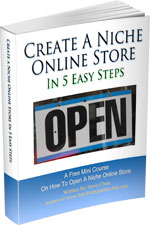
Ready To Get Serious About Starting An Online Business?
If you are really considering starting your own online business, then you have to check out my free mini course on How To Create A Niche Online Store In 5 Easy Steps.
In this 6 day mini course, I reveal the steps that my wife and I took to earn 100 thousand dollars in the span of just a year. Best of all, it's absolutely free!

